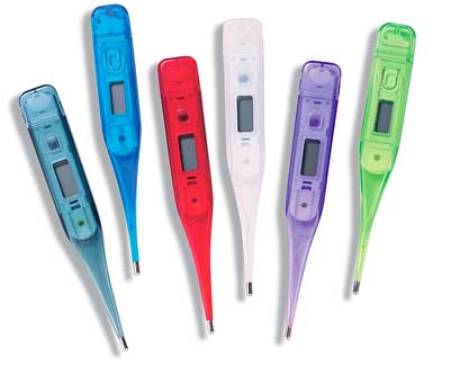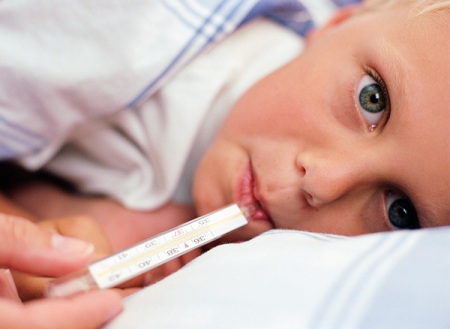
Common myths about fevers have been around for ages and relying on them entirely without knowing may not help you. Mentioned ahead are the top myths about fevers.
98.6 F body temperature is normal.
Despite the scientific progress man has made, many people still believe that when the temperature is 98.6 F, the child is suffering from fever. It has to be borne in mind that the internal body temperature of a child is much higher as compared to adults. The temperature generally changes every hour depending on the age of the person, his range of physical activity, health and surroundings. The strong belief that 98.6 stands for the internal temperature springs from a study that was carried out almost a century ago. The survey revealed that when the body temperatures of around 25,000 people were measured, 98.6 was the average. Also, one cannot overlook the fact that while doing so people used primitive thermometers which can never match up to the accuracy levels demonstrated by contemporary models. The reality is that once we start aging, the body temperature tends to go down. Inactivity is another factor that causes the core temperatures to fluctuate.
We can test a person’s temperature effectively by feeling his/her forehead.
It goes without saying that the above belief is a little more than sheer misconception. How the patient’s forehead responds to the touch may depend on a plethora of things. Hence, the only reliable method when it comes to accurate measurements is to use the thermometer.
Feed a cold, starve a fever.
A popular myth but, alas, one that is miles away from truth. A number of people are actually familiar with the saying. Fact is that fever causes the body to lose essential fluids through incessant sweating and breathing. Hence, the system will need more fluids than usual. Fluids may also help the human body to decongest, thereby ensuring a speedy recovery without unnecessary energy losses.
Getting a cold bath helps reduce the body temperature.
If you had practiced this before, our advice is, never repeat the mistake. This can trigger a rise in internal temperature levels making the patient feel worse.
Without necessary medical attention, fever crosses the 105 F mark.
Another popular misconception encouraged by the society is that without the necessary medical attention fever goes higher. Owing to the brain’s thermostat, the infection generated fevers may also reach the 104°F level but can barely be expected to cross the 105°F mark.
Fevers may damage the brain or fevers over 104°F are highly dangerous.
There is no denying the fact that while temperature readings hovering around 104° F may cause alarm, but the fevers carrying infections, on the other hand, do not damage the brain. Internal temperatures of 108°F are fatal. However, such conditions do not occur often and are rare.
Temperatures ranging between 98.7°F and 100°F are categorized as low grade fevers.
Just because a person is running temperatures above 98.6° does not imply he has fever. The internal temperature undergoes changes throughout the day, reaching a peak during afternoon or evening.
Fever of every shape and size is bad for kids.
Fevers help turn the immune system of the body on. They are one of the most effective protective mechanisms our body uses. While fevers ranging between 100°F and 104°F are actually good for most children, babies below the age of three months are certainly exceptional. In their case, the elders must consult a doctor straight away.
Medicines keep the fever down.
In most viral infections, the fever lasts two to three days. Hence, as soon as the medicinal effects start to wear out, the illness returns, needing to be treated. The fever may leave the system once the child’s body has managed to overpower the virus.




